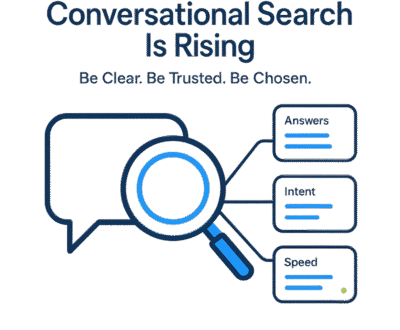User Friendly Website
Creating a User-Friendly Website is essential for engaging visitors and ensuring they have a positive experience. A User-Friendly Website not only attracts more traffic but also helps in retaining users and converting them into loyal customers. Here are some best practices to help you design a User-Friendly Website:
1. Responsive Design
A User Friendly Website must be accessible on all devices, including desktops, tablets, and smartphones. Implementing a responsive design ensures that your website adapts to different screen sizes, providing a seamless experience for all users. This adaptability is crucial in today’s multi-device world, where users might switch between devices throughout the day. By ensuring your website looks and functions well on any device, you cater to a broader audience and enhance user satisfaction.
2. Intuitive Navigation
Clear and intuitive navigation is crucial for a User Friendly Website. Users should be able to find what they are looking for without any hassle. Use a simple menu structure, and include a search bar to help users locate information quickly. Navigation should be logical and straightforward, with clearly labeled categories and subcategories. Breadcrumbs can also be useful, allowing users to track their path and easily return to previous pages.
3. Fast Loading Times
A User Friendly Website should load quickly. Slow loading times can frustrate users and lead to higher bounce rates. Optimize images, use efficient coding practices, and leverage browser caching to improve your website’s speed. Tools like Google PageSpeed Insights can help identify areas for improvement. Remember, even a one-second delay in page load time can significantly impact user satisfaction and conversion rates.
4. Readable Content
Content readability is a key factor in creating a User Friendly Website. Use clear and concise language, break up text with headings and bullet points, and choose fonts that are easy to read. This helps users to digest information effortlessly. Additionally, consider the use of white space to avoid clutter and make your content more approachable. Readability tools like Hemingway Editor can help ensure your content is accessible to a broad audience.
5. Accessible Design
Ensure your User Friendly Website is accessible to everyone, including people with disabilities. Follow the Web Content Accessibility Guidelines (WCAG) to make your website inclusive. This includes using alt text for images, providing keyboard navigation, and ensuring color contrast. Accessibility not only broadens your audience but also demonstrates social responsibility and can improve your site’s SEO.
6. Engaging Visuals
Visual elements play a significant role in a User Friendly Website. Use high-quality images, videos, and graphics to make your website visually appealing. However, avoid cluttering the page with too many visuals, as this can overwhelm users. Striking a balance between text and visuals can enhance user engagement and retention. Interactive elements like sliders, galleries, and infographics can also add value without compromising usability.
7. Consistent Layout
Consistency in design elements such as fonts, colors, and button styles contributes to a User-Friendly Website. A consistent layout helps users to navigate your site more easily and creates a cohesive look and feel. Consistency extends to the tone and style of your content, ensuring a unified brand voice. Design systems and style guides can help maintain consistency across different pages and sections of your website.
8. User Feedback
Incorporate user feedback to continuously improve your User Friendly Website. Use tools like surveys, feedback forms, and usability testing to gather insights from your users. This helps you to identify areas for improvement and make necessary adjustments. Regularly reviewing and acting on user feedback can lead to a more refined and effective website. Tools like Hotjar and Google Analytics can provide valuable data on user behavior and preferences.
9. SEO Optimization
A User Friendly Website should also be optimized for search engines. Use relevant keywords, meta tags, and alt text to improve your website’s visibility on search engine results pages (SERPs). This not only drives more traffic to your site but also enhances the user experience. SEO best practices include creating high-quality content, optimizing page titles and descriptions, and ensuring your site is mobile-friendly. Regularly updating your content and monitoring your SEO performance can help maintain and improve your rankings.
10. Regular Updates
Keep your User Friendly Website up to date with fresh content and the latest design trends. Regular updates show users that your website is active and reliable, encouraging them to return. This can include blog posts, news updates, and new product or service offerings. Staying current with web design trends and technologies can also help keep your site looking modern and functioning smoothly.
By following these best practices, you can create a User Friendly Website that not only meets the needs of your users but also stands out in search engine rankings. Remember, a User-Friendly Website is the key to building a successful online presence. A well-designed website can significantly impact your brand’s reputation, user satisfaction, and overall success. Investing time and resources into creating and maintaining a User-Friendly Website is a strategic move that can yield long-term benefits for your business.
9 Guidelines & Best Practices for Exceptional Web Design and Usability
Table of Contents
About us and this blog
We are a digital marketing company with a focus on helping our customers achieve great results across several key areas.
Request a free quote
We offer professional SEO services that help websites increase their organic search score drastically in order to compete for the highest rankings even when it comes to highly competitive keywords.
Subscribe to our newsletter!
More from our blog
See all postsRecent Posts
- How to Turn Your Website Into a Lead Generation Machine December 18, 2025
- Is Your Website Losing Customers? Here’s How to Fix It December 16, 2025
- Local Search Success December 6, 2025










